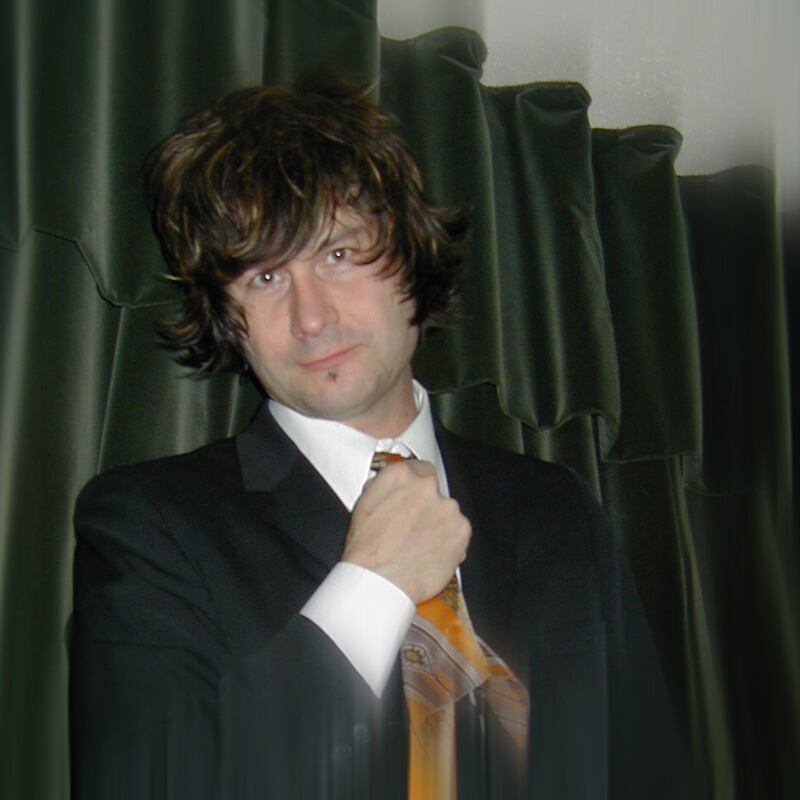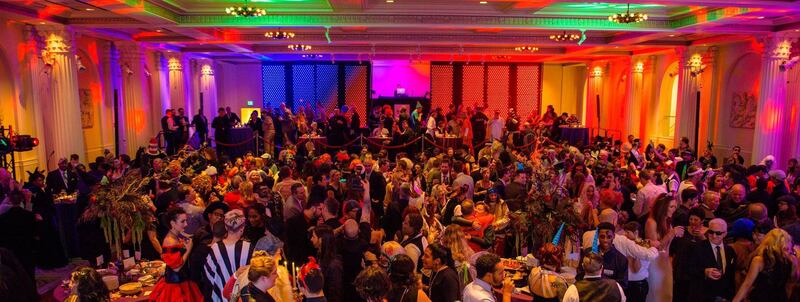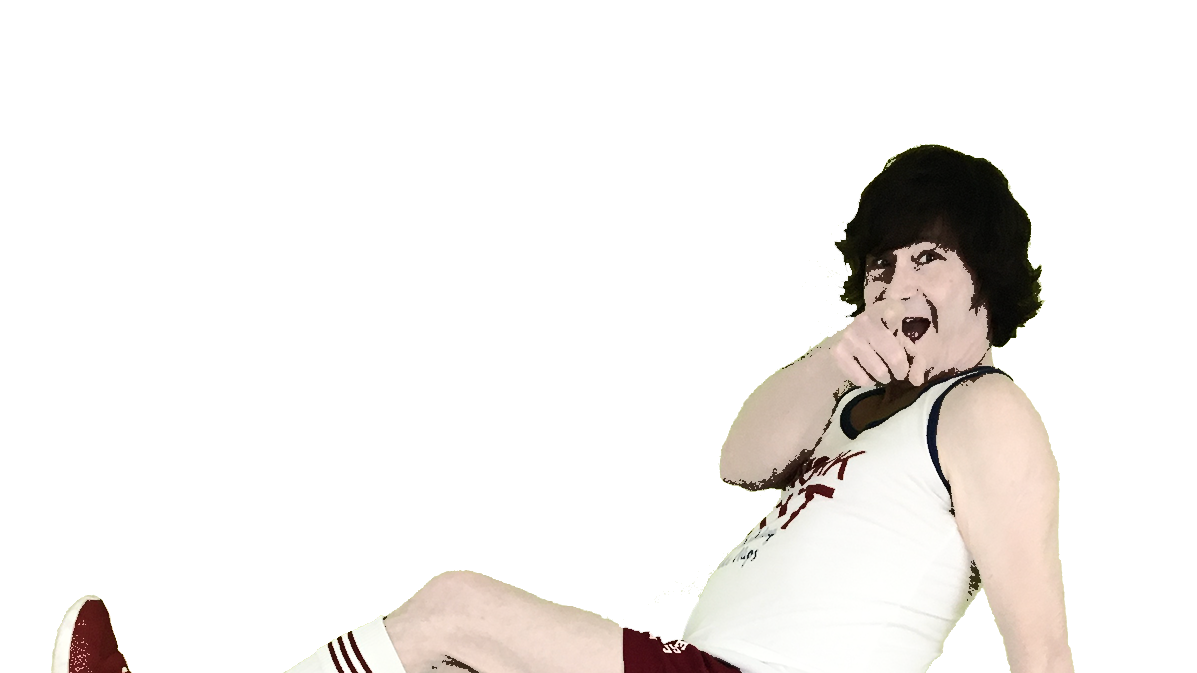A quarter-century ago, when retro DJ nights meant KISN FM booming through the bar’s sound system and landfill-bound vinyl LPs were discarded like the bastard progeny of 8-tracks and floppy discs, Portland nightlife sounded far different.
Through the ‘90s, professional DJs mixed either beats or wedding parties while dance clubs played one of a million techno variants indistinguishable to the uninitiated. A decade of mosh pits and arrhythmic shoulder shuffling lent indie rock a whiff of the pretentious or awkward or miserable.
The stage was set for somebody to make music snobbery fun again, and California émigré Greg Cline became the DJ hero we deserved.
Armed with only a vast record collection and a knack for pinpointing devalued popcraft with untapped cachet, the newly christened DJ Gregarious locally introduced the notion of a benevolent song master subtly, constantly tending the mood of a shared debauch via familiar tunes expertly chosen to let the good times roll.
Where jukeboxes papered over dead air or trilled sectarian anthems, the DJ controlled his night through successive application of le note juste—a tastemaker-flattering medley of forgotten hits, out-of-left-field faves, and genre-spanning evergreens resembling a technically eclectic, weirdly coherent soundtrack to unfolding events compiled in real time.
Handed the prime Friday evening slot for the Crystal Ballroom’s much-anticipated new level 20 years ago, Gregarious launched Shut Up & Dance. The awesomely ’80s-fueled dance night for people who hate dance nights instantly became such a downtown-galvanizing success that, even after undisclosed disputes spurred relocation a few blocks east, the transplanted SU&D would fill the Fez’s (rather larger) dance floors for another decade.
However impressive the achievement, Cline’s all too aware that claiming Portland’s longest-running dance night feels somewhat bittersweet. While his rarefied reputation attracts private gigs for well-heeled corporate clients (Google, Airbnb) and PDX institutions (Portland Opera, Oregon Children’s Theatre), he’s lately followed his passions down new avenues, honoring heroes (Days of Bowie, Ray Davies Day); orchestrating fashion events (Fade to Light, Alley 33, Unmentionable); and curating playlists for the Hollywood Theatre’s mid-COVID drive-in screenings.
(The DJ also rocks vintage leg warmers for a monthly celebration of early-’80s aerobics packed by Zoomer nymphets for reasons that surpasseth understanding. He has, once again, a knack for these things.)
Days away from the triumphant return of Shut Up & Dance to Lola’s after 20 years apart, WW harangued the DJ about spinning New Wave amid Old Portland, beating back the bouncier hippies, and navigating the politics of dance nights.

WW: How’d this all begin?
DJ Gregarious: Oh, I always collected records as an aficionado, and I was making mixtapes with my vinyl all through my life. Back in the ‘80s, while telling everybody that disco was coming back, I used to go to parties and hijack the music. I’d put in my disco mix, and people would get so upset: “Disco sucks!” It’s not going to suck a year from now. Jump on board.
Where was your first gig?
When I lived above the Monte Carlo, hearing their goddamned DJ every night, I was, like, I can do better than this. I think that’s when I became a DJ….
He cockblocked me with the Monte Carlo owners, but the East Ave Tav booker wanted me to DJ a Pogues night for St. Patrick’s Day. I told her I didn’t have all the Pogues on record, and this guy—Jesse? Weren’t they all named Jesse?—says not to worry, he’ll take care of it. I’d invested a bunch of money in a DJ setup, trying to be legitimate, and brought all my equipment to the bar. And, then, this Jesse guy hands me a stack of CDs. “Here you go!”
So, I end up just shoving them into their shitty jukebox. Shuffle. Boom. Pay me. My first real live DJ gig, I’m basically loading the CD player.
After East Ave, I tried doing theme nights, which were cute, and I started making mixtapes again for a girl at Bar of the Gods. Her boss was, like, “Who puts fucking Eddie Rabbitt next to Dokken?” She wanted to meet me, and I said I could DJ live. They couldn’t pay me, but that was all right. I just loaded my sound system and records in my Pinto every Wednesday night, and the people responded.
“Oh my God, I have this record! I can’t believe you’re playing this record!” Of course, you do. We all have this music. That’s the point! I’m playing this T. Rex song because we all love it! Nobody’s trying to be deep or revolutionary. We’re having a party at a bar, so let’s sing along and dance, you know?
Seems almost cliché now (the stuff of Portlandia sketches), but in the late ’90s, DJ nights were still pretty rare, yeah?
Oh, absolutely! I’d been to these dance nights on the East Coast where people played this eclectic music we could relate to in a pop mentality, like Joan Jett rock ’n’ roll. When I went to Bar of the Gods, I wasn’t inventing anything. This was already happening on the East Coast. This is going to happen! How can you lose?
It was such an easy thing to me, but back then, people thought DJs only played dance music. We weren’t trying to relate to the club ravers because we don’t care about them. We just wanted the Portland people (the record collectors who have this mentality or aesthetic, like Elliott Smith covering the Zombies) and it became this symbiotic dialogue. “Do you have Big Star?” “I’ve heard Big Star.” “You should get Big Star!”
Now, it’s almost over the arc. The bars have finally caught on that having just any DJ kind of ruins business. That’s the saddest part of this narrative. Great vinyl DJs are so few and far between that they’re actually making good money. I don’t want to get snarky, but for most of them, just collecting records doesn’t make you a DJ.
***
After Bar of the Gods…
I started having ambitions about branching out. Through Kitty Diggins, I got on to the Acapulco Gold circuit, which was horrible because I had to play bubblegum for the Partridge Family Temple or whatever they were called. They were all named Partridge, they were all satanic, and they were, like, following me. I couldn’t play anything but Bobby Sherman and the Archies or they’d turn on me.
Then the fucking Matador every Sunday night where my job was literally driving out the homeless people who slept at the bar. “Hey, man, you going to play some George Thorogood?” Sorry, sir, management wants the opposite of that because we don’t want you, but here’s some Butthole Surfers as compromise—they’re from Austin?
My bass player in [Cline-fronted early ’00s pop combo] Birdie Num Num worked for the Crystal Ballroom, and they were opening up a space below called Lola’s Room. They asked if I’d be interested in doing a dance night, and I said no. Dance nights are stupid, but if I was going to do a dance night, it’d be ’80s because that was the only music I liked back then. It was nostalgia, it was going to come back, but it wasn’t tired yet.
That first night, I think I played to 12 people. The second night, there were 24. After that, we positioned the stage so people could come down when there was a show upstairs.
Did your playlist change depending on the main stage acts?
Oh, definitely, but only in a self-serving way. When the Cramps were upstairs, I played better music. When the guys from the Grateful Dead were upstairs, I played better music trying to piss them off—like, if there was a jam band, I’d be hitting it harder with My Bloody Valentine or whatever the opposite of what they were about. Basically, I’d stick to my motif, just…nuanced. I mean, when I started, I played that ’80s Grateful Dead song “Touch of Grey” just because I was working for McMenamins. Never again.
I didn’t have a very good relationship with the clientele they were bringing in. It was interactive and so, so bouncy. I’m on a stage with people bouncing up to say hi and wondering why the DJ’s always so hostile. “Because you’re making the records skip, you fucking hippie!”
I was trying to do a job, you know? Tie-dyed guy comes up to ask what I’m spinning, which is what he’s hearing, and wants to go through my records. And, like, Jesus, no, you cannot look through my records. “Can I come to your house and go through your refrigerator? What the fuck is wrong with you?!” Obviously, in hindsight, I get how aggro I sound, but I’d do the same thing today. I do not need your help reminding me of my records.
This might seem to counter what I was saying about Bar of the Gods, where we all picked the music we all liked. I guess by that I mean music that’s liked by the people I like.
It worked, though?
The Crystal Ballroom became huge, and Lola’s dance night.…There was nothing like it in Portland.
How many people?
I’m really bad at numbers—capacity times two? I think Lola’s held 300 and the Fez 450, and there were always lines. When all’s said and done, like 700 to 900 people paid through the door every week. I was pocketing so much cash at the time that I still find wads in my old shoes. It was delicious for a time…
Moving Shut Up & Dance to the Fez—same night, same time, few blocks away—felt pretty seamless.
After SU&D got canned at Lola’s, I needed a new venue, and they gave me a shot for New Year’s Eve—fucking badass. We never looked back. This was the golden era of Shut Up & Dance, in its own dysfunctional way.
You kept the name?
Yes. Stupid as the name may be, it was mine. Lola’s kept the Friday ‘80s nights going with Dance & Tell, which was probably meant to be Shut Up & Dance’s opposite. (The strategy must have worked since they didn’t last the month.) The problem seemed to be that the DJ thought he could just play the same songs each time. I was always throwing a wrench at the dance floor to keep the people on their toes. Literally, I guess.
***
After Lola’s, after the Fez especially, you seemed to veer away from the ‘80s-only construct.
Once bands like Interpol and Ladytron came out, I didn’t want to just do all ’80s all the time. I was so excited that these new bands were drawing from the well of Joy Division and the Chameleons and Wire that I started integrating them. I remember being a little trepidatious after going down to (early Shut Up & Dance influence) New Wave City in San Francisco. They hired me to DJ, and the moment I start playing Interpol, it was like Dylan at the jazz festival. Some people were, like, so glad to hear modern music. Other people were, like, “Burn the witch!”
As a DJ, I don’t condone the stoic pure-’80s bullshit, but I now understand that you have to give people a narrative. It’s like when you watch Yellowjackets or any period show that works within its own context. That’s what I didn’t realize and where I failed [45 East forerunner] Rotture. God bless those guys. I love that venue so much, but I let ’em down.
I thought I was an artist, which bit me in the ass because I’m not an artist. I’m a DJ that plays other people’s music. The path we went down after I woke up to that revelation led to the need for Shut Up & Dance: Redemption.
The door creaked open for people saying I had to play Lady Gaga—”the new Madonna!”—or She Wants Revenge or The Killers. I stopped being the gatekeeper and felt the material was suffering. That was the end of Shut Up & Dance. Keep saying whatever, let’s just have fun, and, then—oh, shit, I’ve just opened the portal to hell.
Your outfits stayed ‘60s throughout, though? Was this a conscious branding?
I have a very definite aesthetic criteria that’s resonant to me. It’s a hard thing to define. I do these tween parties where kids who want to be DJs come up and start asking questions. First thing, I tell them it’s hard work. You won’t just be playing Megan Thee Stallion into Harry Styles for decades. The second thing I tell them is to always dress like you give a fuck. It’s bullshit, otherwise. That’s my style, I guess. I want you to at least know that I got dressed properly [laughter].
I’m not legitimate. I’m a poseur. I’m a pretentious narcissist. I’m not a backpack-wearing, cargo-shorts kind of DJ. I’m not that good, you know, so I have to look [a certain way] so as to confuse my audience. Look at me, look at me, look at me, and, oh, by the way, the song’s good. Confuse the enemy. That’s my philosophy.
You DJ tweener parties?
After COVID, schools wouldn’t have dances, but the Sellwood Community Center wanted to host something for 11- to 13-year-olds, which means playing Top 40. They were, like, “You do that?” No! I don’t do that (I hate modern music), but I will. When I was that age, I only wanted to hear what the fuck was on the radio. Kids want the latest music, and if I don’t check the charts on the way to the venue, I’m, like, Drake dropped a song?!
It was the same thing with Shut Up & Dance. I first said no, because dance nights suck, and told the Crystal I’d only consider playing one in the context of somebody who knows that dance nights suck.
And these tween gigs are probably the biggest successes I’ve had. They come running in the door, devour my request sheets...and just go nuts for two hours. They’re feral, and I love it. Makes me remember what it was like to care about the world.
I guess I’m pretty proud of where I’m at right now, and that makes me kind of sad. In high school, I wanted to be a Beatle, and this stage in my life…I’m never going to be a Beatle. I’m never going to be Harry Styles or Mick Jagger. I’m never going to be an icon, but you know what? In my own tiny little mind, I can be that.
When I do these events, I realize—wow, I’m not more cynical, I’m more optimistic. I’m the guy you hired because you wanted to have the best times. If you want to hear electroclash or whatever your shtick may be, I’m not here to judge. You want to hear stupid ’90s music? I’m going to play the best stupid ’90s music in the world. And that’s…kind of liberating.
You know, other day, I looked up the oldest DJ in the world. It was a Japanese woman, can’t pronounce her name, and God, I’ve got a long way to go.
But, dude, I promise you. I’m going to kick that motherfucker’s ass.
SEE IT: Shut Up & Dance: Redemption is at Lola’s Room, 1332 W Burnside St., 503-225-0047, mcmenamins.com. 8 pm Friday, Sept. 2. $15. 12+.

